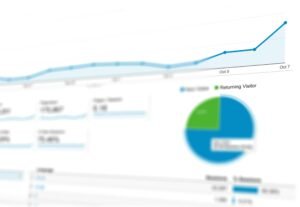Ever wondered why some of your webpages just don’t make it to Google’s good books? It all boils down to something called the crawl budget! This isn’t about keeping spiders under control, but about ensuring those sneaky search engine bots explore your site as you intend. Your crawl budget is like a VIP pass, giving only a certain number of site pages a shot at being seen. So, what’s the secret sauce to calculating it right? Let’s learn how to calculate crawl budget effectively and boost your site’s visibility!
Understanding How to Calculate Crawl Budget
Crawl budget is your website’s gateway to becoming popular online. It refers to the number of pages a search engine, like Google, decides to visit on your site over a certain period. Imagine it like the guest list for a party—the more names, the more people (or bots) show up. This matters because if search engines don’t crawl and index your pages, they won’t appear in search results. No matter how great your content is, lacking a crawl budget is like a rockstar without a stage. Google’s crawl budget can range from a few to millions of pages daily, based on several factors.
So, what impacts this budget? Think of it like your website’s health report. A large site with many pages might get more visits. However, if your site has issues like broken links or slow loading times, that’s a big no-no. The number of links also matters. More, especially high-quality links, act like a neon sign saying, “Hey, check this out!” Keeping your site clean, fast, and well-linked builds a good reputation. In short, the healthier and more connected your site, the more likely it is to get a generous crawl budget.
Factors Influencing Crawl Budget

Why does Google decide how much of your site to crawl? It’s all about crawl demand factors. Picture your website as a popular new movie—everyone wants to see it, but only the best scenes are featured. If your content is fresh and exciting, Google’s bots are more likely to visit. Think of fresh content as a new coat of paint; it grabs attention! So, keep updating your content to keep those bots coming back.
Now, let’s discuss crawl capacity limits. This is like a club bouncer, ensuring things aren’t overcrowded. Google’s bots avoid crashing your site by limiting requests. These limits help manage server resources, keeping your site fast and efficient. If your server can handle it, you’ll welcome more crawls easily. If not, boost server resources— it’s like upgrading from a minivan to a sports car for better performance.
Finally, explore tools like Google Search Console. This is your access to crawl activity insights. It unveils what’s happening behind the scenes, much like a detective solving a mystery. You’ll see host status and details about crawl requests. Monitoring these details helps you optimize your site architecture and manage server resources to grab the attention your site deserves.
Here’s a quick list of factors impacting your crawl budget:
- Content freshness
- Server capacity
- Site popularity
- Internal linking structure
- Site architecture optimization
Keep these in mind to promote a healthier crawl budget!
Calculating Your Crawl Budget
Curious about calculating your crawl budget? Begin by checking server logs. They’re like a treasure map, showing crawled URLs. Reviewing these logs is like solving a detective mystery of your site’s crawl activity. You’ll identify which pages Google’s bots visit and how frequently. This insight reveals what’s working and what needs improvement. Server logs offer a full view of crawling behavior, so be sure to use them!
Next, explore Google Search Console. This tool is the control center for tracking crawl stats. It provides charts over time and host status insights, showing trends and potential issues. Through Google Search Console, you see how often Google visits your site and which parts attract the most attention. It’s essential for keeping tabs on your crawl budget, ensuring that key pages get noticed. It’s like a fitness tracker for your site’s visibility health.
Ready to take action and learn how to calculate crawl budget? Use tools like Semrush’s Site Audit to analyze your crawl budget. These tools guide you in optimizing which pages are crawled. Begin by auditing your site for errors or slow-load pages that might be using too much crawl budget. Fix them, and you’re on track for a cleaner, more efficient site. Remember, the goal is for search engines to see your best content first. These tweaks roll out the red carpet for bots, focusing on what matters.
Optimizing Crawl Budget for SEO

How to calculate crawl budget—best way? Let’s talk about speeding things up! Fast-loading pages are like VIP passes for search engine bots. They enjoy quickly navigating through sites without slowdowns. So optimize images and use a content delivery network (CDN) to maintain speed.
Then, consider internal linking. It’s like giving bots a roadmap to your best content. By strategically linking important pages, you effectively say, “Hey, check this out!” Bots are more likely to focus on these, boosting your site’s SEO health.
Next, address sitemaps and block unwanted URLs. A well-structured sitemap is like an invite list for bots, guiding them to vital pages. Regular updates ensure it includes only essential pages. Also, use a robots.txt file to block crawling on pages that don’t add value. This reserves the crawl budget for important pages.
Redirects can waste crawl budget. Too many redirects are like sending bots on a wild goose chase. Minimize redirect chains by fixing broken links, ensuring URLs direct to their destinations efficiently. Managing duplicate content is also essential. Imagine bots reading the same book repeatedly—dull, right? Duplicate content confuses search engines and wastes crawl budget. Ensure each page offers unique value to keep bots engaged and indexing fresh content.
Finally, regular site audits are crucial. They’re like a health checkup for your site, ensuring smooth operation. Use tools like Semrush or Screaming Frog to detect issues that low productivity your crawl budget. Regular audits catch problems early, maintaining your site in optimal condition. This ensures search engines can access your most valuable content, optimizing your crawl budget effectively.
Tools and Resources for Managing Crawl Budget
How to calculate crawl budget with the right tools. They are your SEO toolkit, enhancing your website’s optimization. They offer insights that can make or break how effectively search engines crawl your site. With tools like Google Search Console, you can view how often pages are crawled and any potential crawl errors needing fixes. It’s like having a magnifying glass for your site’s technical SEO, ensuring optimal crawl budget use.
Now, let’s see how these tools help. Google Analytics isn’t only for tracking visitors—it’s a crawl insight powerhouse, showing user behavior impacting crawl rates. Meanwhile, server log analysis tools like Logstash + Kibana show which URLs are crawled, providing valuable crawling behavior data. Furthermore, Screaming Frog’s SEO Log File Analyser gives detailed error breakdowns, efficiently resolving crawl issues. Using these tools, you identify working aspects and areas needing improvement to optimize your crawl budget.
- Google Search Console: Monitors crawl stats and identifies crawl errors.
- Google Analytics offers insights into user behavior affecting crawl rates.
- Logstash + Kibana: analyzes server logs for detailed crawling behavior data.
- Screaming Frog’s SEO Log File Analyser: Provides error breakdowns to resolve crawl issues.
Conclusion
Exploring how to calculate crawl budget means getting into how search engines view your site. It can boost your site’s visibility and rank. We went through what affects the crawl budget, from content freshness to server capacity.
We also looked at tools like Google Search Console for keeping tabs on your crawl activity. A deep dive into crawl management tools showed us how to break down the numbers.
If you’re figuring out how to calculate crawl budget, remember: it’s all about balance. Keep your site healthy and user-friendly, and you’ll have a winning strategy!
FAQ
How to calculate crawl budget, examples?
Calculating crawl budget involves analyzing server logs for crawled URLs. Use tools like Google Search Console and Semrush’s Site Audit for insights into crawl behavior and to enhance efficiency.
What is crawl budget?
A crawl budget is the number of URLs a search engine will crawl on your site in a set time. It’s key for ensuring pages are indexed and rank in search results.
How to increase crawl budget?
To increase crawl budget, focus on improving site health, speed, and structure. Use internal linking and sitemap updates to guide crawlers effectively through your content.
What is the formula for crawl budget?
There’s no specific formula for crawl budget, but analyze factors like site health, URL count, and server capacity. Monitoring these helps adjust and optimize crawls.
How do I find my crawl budget?
Discover your crawl budget by checking Google Search Console’s crawl stats and analyzing server logs. These give a snapshot of how often and extensively search engines visit your site.




